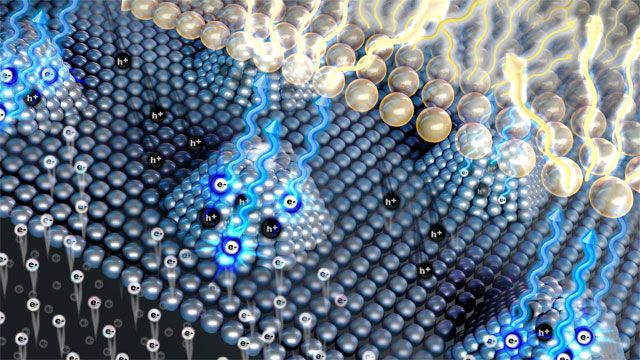There are obvious reasons why consumers increasingly turn to LED-based lighting, says Jonathan Wierer, associate professor of electrical and computer engineering. LED light bulbs consume 85 percent less energy than incandescent bulbs and 25-35 percent less than compact fluorescent light (CFL) bulbs. LEDs last for decades—and can be engineered in ways that just aren’t possible with their rivals.
Wierer believes that LEDs can be made even more energy-efficient—perhaps twice as much—with better engineering of their active, or light-producing, regions. Working with Lehigh professor Nelson Tansu and colleagues from Sandia National Laboratories, Wierer has proposed the use of quantum dots (QDs) to produce LED light, in place of the “quantum well” technology currently used by manufacturers.

Read the full version of this story in the Lehigh Engineering News Center.
Quantum wells confine electrons and other particles in one-dimensional, rather than three-dimensional spaces, in ultrathin layers of sandwiched materials. Carriers—electrons and electron holes—are injected into these layers at different energy states, and they recombine to produce the photons that give light. However, a phenomenon known as Auger recombination can cause what Wierer describes as an “efficiency droop” in LED performance.
QDs, on the other hand, emit light at specific frequencies when an electric current is applied. By changing their size, shape and material composition, engineers can tune these frequencies for efficiency and other key applications.
According to the researchers, if properly constructed, LEDs with QD active regions have the potential to outperform quantum well LEDs. The team’s recent article in Laser and Photonics Reviews was based on a theoretical study conducted with computer numerical simulations. The group has begun to conduct experimental studies using etching and growth techniques to fabricate quantum dots. Their goal is to make smaller QDs, only 4 nanometers in size, of a uniform dimension and even distribution.
“If our theoretical work can be realized,” says Wierer, “among other benefits, this could lead to ultra-efficient solid state lighting sources with huge potential for energy savings.”

